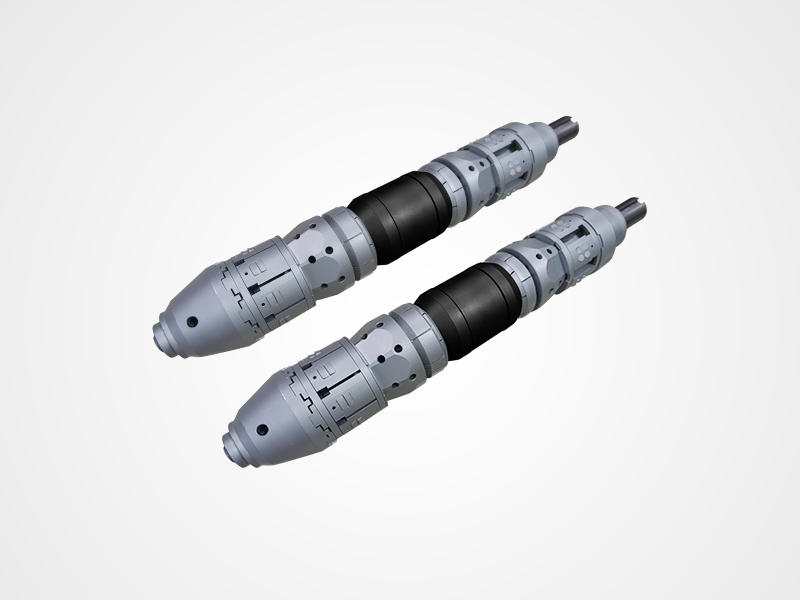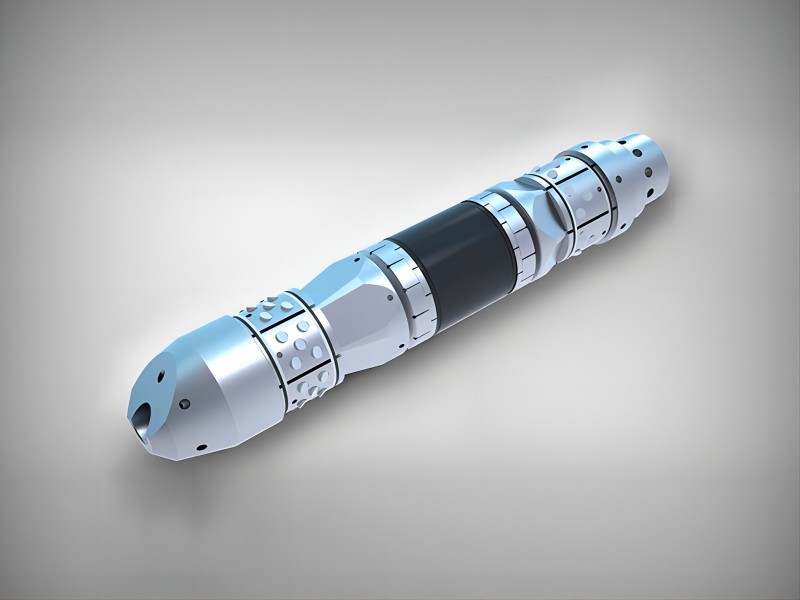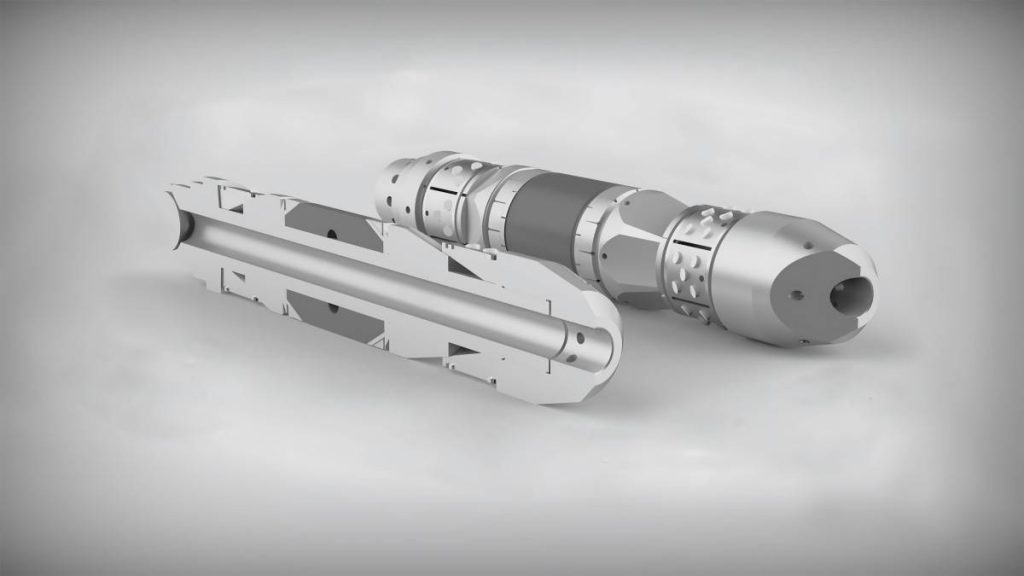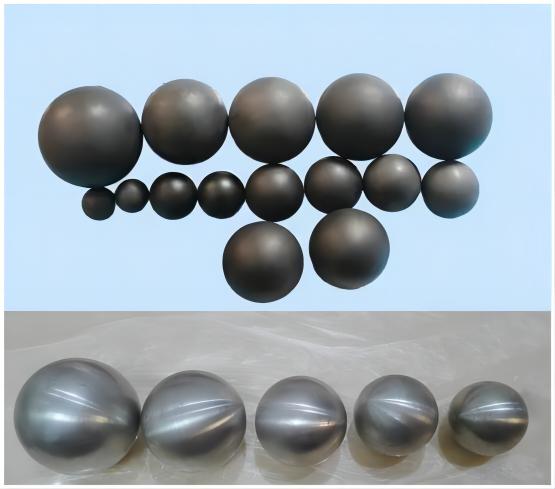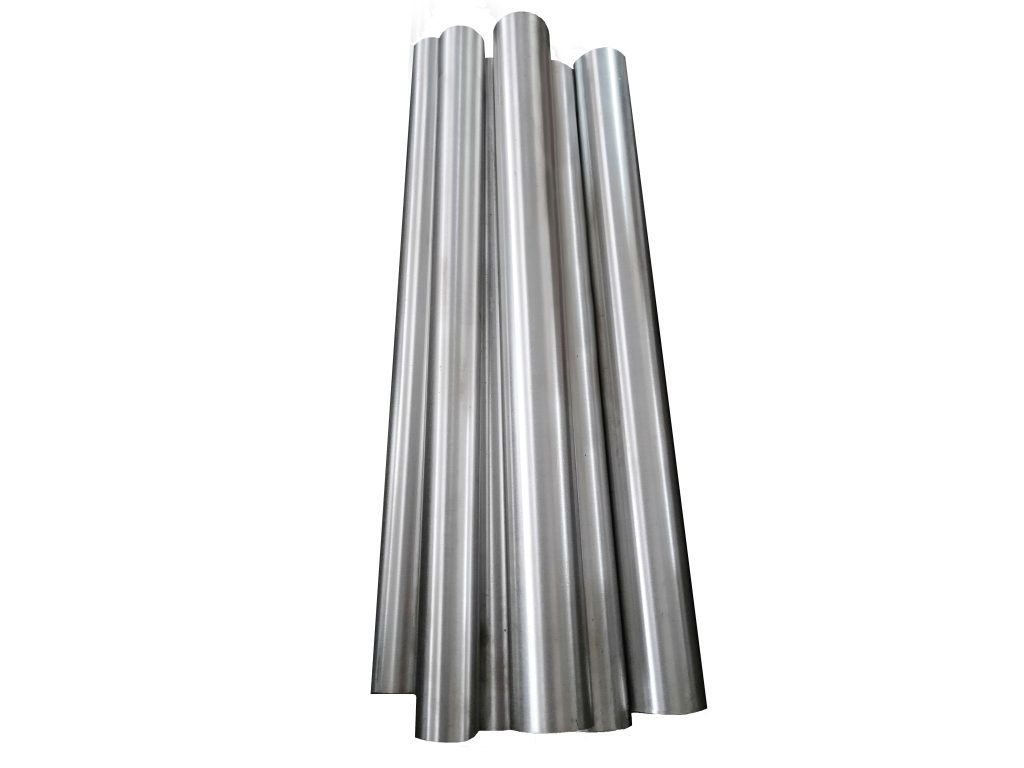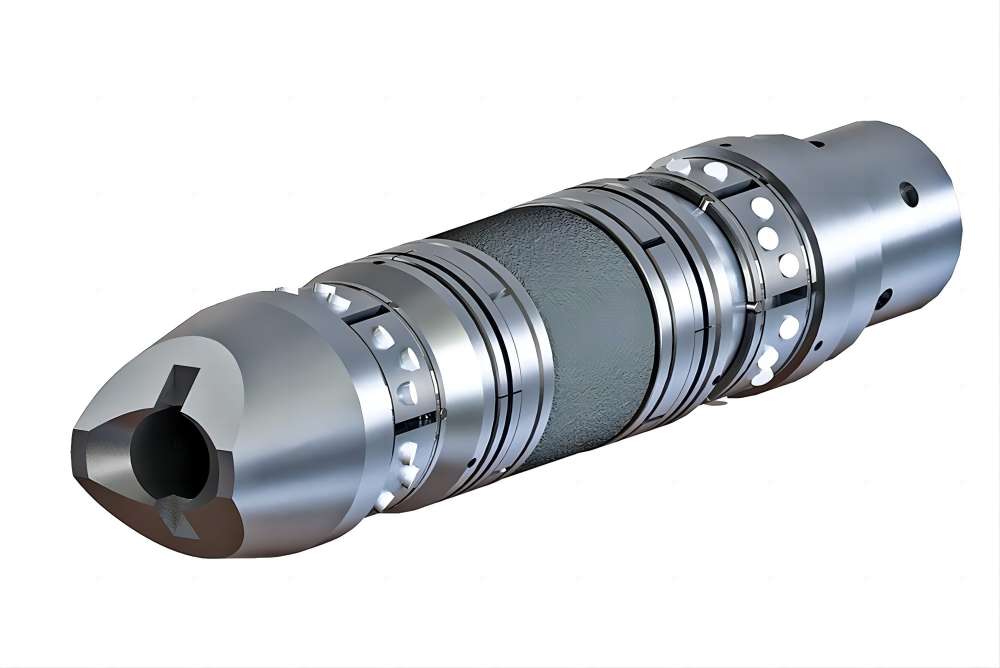Disintegrating Frac Plugs: Revolutionizing Efficiency in Hydraulic Fracturing
The success of hydraulic fracturing, a well stimulation technique crucial for oil and gas production, hinges on precise control over fluid flow within the wellbore. Downhole tools play a vital role in achieving this control, and one such tool rapidly gaining traction is the disintegrating frac plug. This article delves into the world of disintegrating frac plugs, explaining their function, significance in the oil and gas industry, working mechanism, and how they compare to dissolvable frac plugs, a similar technology.
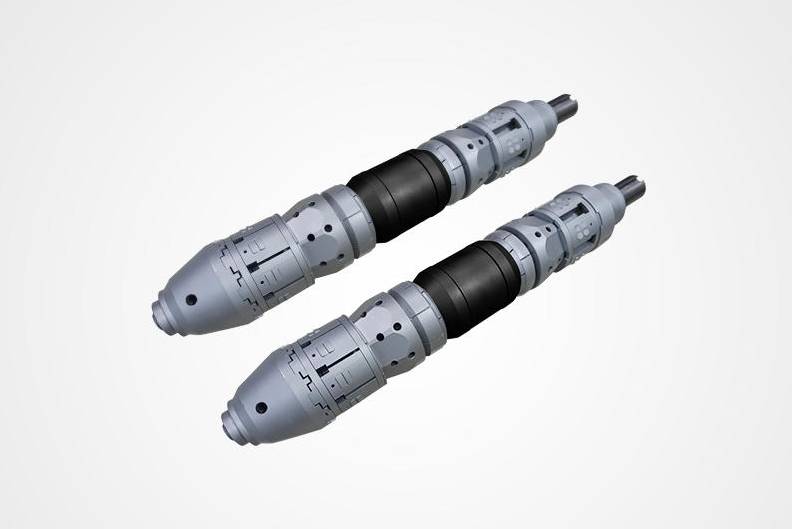
What is Disintegrating Frac Plug?
A disintegrating frac plug is a downhole tool strategically placed within a wellbore during hydraulic fracturing operations. These plugs are manufactured from composite materials or specific alloys designed to fragment into small pieces under downhole pressure and wellbore fluid conditions. This disintegration characteristic eliminates the need for additional intervention to retrieve the plug after it serves its purpose, streamlining the fracturing process and reducing overall costs.
Importance of Disintegrating Frac Plugs in the Oil and Gas Industry
The relentless pursuit of the oil and gas industry is to maximize production output while minimizing expenses. Disintegrating frac plugs address these crucial goals through several distinct advantages:
1. Reduced Completion Time: Traditional hydraulic fracturing procedures rely on retrievable frac plugs. These plugs require a dedicated operation to remove them after serving their purpose, adding significant time to the overall well completion process. Disintegrating frac plugs eliminate this extra step entirely. Since they break down downhole, there’s no need for retrieval, leading to faster well completion times. This translates to quicker hydrocarbon production and a faster return on investment for oil and gas companies.
2. Cost Savings Through Streamlined Operations: Disintegrating frac plugs significantly reduce operational costs associated with hydraulic fracturing. By eliminating the need for a separate retrieval operation, disintegrating plugs minimize the amount of rig time required. This translates to lower equipment rental fees, reduced labor costs for personnel involved in retrieval, and less overall well downtime. Additionally, with fewer well interventions, the risk of wellbore complications arising from retrieval operations is also minimized, leading to further cost savings.
3. Enhanced Wellbore Integrity Throughout the Process: Retrievable frac plugs pose a potential threat to the wellbore during their removal. The mechanical process of extracting them can damage the wellbore casing or formation, leading to leaks and compromising the well’s integrity. Disintegrating frac plugs eliminate this risk entirely. Since they break down the downhole, there’s no physical retrieval involved, safeguarding the wellbore’s integrity throughout the fracturing operation. This translates to lower well maintenance costs and improved well longevity.
- Enabling Efficient Multi-Stage Fracturing: Disintegrating frac plugs play a critical role in facilitating multi-stage fracturing, a technique that stimulates hydrocarbon production from multiple zones within a wellbore in a single operation. These plugs act as temporary barriers, isolating specific zones within the wellbore. This allows fracturing fluid to be directed precisely towards the desired zones for optimal stimulation. Once the fracturing process is complete in a particular zone, the disintegrating frac plug breaks down, allowing production to flow from that zone while the fracturing fluid is directed to stimulate the next zone. This targeted approach offered by disintegrating frac plugs optimizes the effectiveness of multi-stage fracturing, leading to increased overall well productivity.

Working Principle of a Disintegrating Frac Plug
The effectiveness of a disintegrating frac plug lies in its precisely engineered material composition and strategic placement downhole. Here’s a step-by-step explanation of its working principle:
1. Deployment: The disintegrating frac plug is lowered into the wellbore using either coiled tubing or fracturing lines. These are long, continuous tubes specifically designed for downhole operations. Once inside the wellbore, the plug is positioned at a predetermined depth to isolate the specific zone targeted for hydraulic fracturing. This placement is crucial for ensuring the fracturing fluid reaches the desired formation section.
2. Pressure-Triggered Disintegration: Upon reaching its designated location, the disintegrating frac plug is exposed to the fracturing fluid. This fluid is a specially formulated liquid pumped downhole at high pressure to fracture, or crack, the target rock formation. The high pressure exerted by the fracturing fluid, combined with the specific chemical composition of the wellbore fluids already present, initiates the disintegration process of the frac plug. In simpler terms, the pressure and wellbore fluid act as triggers, causing the frac plug material to break down according to its designed properties.
3. Controlled Fragmentation: The disintegrating frac plug doesn’t simply break apart randomly. It’s engineered to fragment into predetermined small pieces. The size and shape of these fragments are carefully designed to ensure two key functionalities:
- Easy Passage Through Wellbore: The fragments are small enough to flow through the wellbore and production equipment without causing any blockages or restrictions. This ensures smooth wellbore operations and efficient hydrocarbon production after fracturing.
- Complete Disintegration: The fragmentation process is designed to be complete. Ideally, no large pieces of the frac plug remain after it breaks down. This eliminates any potential issues with restricting flow or hindering wellbore operations in the future.
- Fracturing and Production: With the targeted zone isolated by the disintegrating frac plug, the fracturing fluid can be directed precisely towards that zone. The high-pressure fluid creates fractures within the rock formation, increasing its permeability and allowing trapped hydrocarbons to flow more easily. Once the fracturing process is complete in that zone, the disintegrated frac plug fragments pose no barrier to hydrocarbon flow. Production from the stimulated zone can then commence seamlessly.
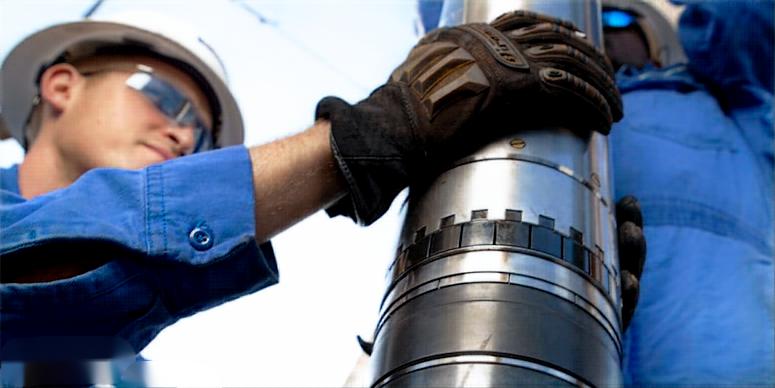
Disintegrating vs. Dissolvable Frac Plugs: Selecting the Optimal Downhole Tool
Disintegrating frac plugs and dissolvable frac plugs are both valuable tools used in hydraulic fracturing, but they differ in their removal mechanisms. Understanding these differences is crucial for selecting the most suitable option for a specific well completion project.
Dissolvable Frac Plugs
Removal Mechanism: These plugs are comprised of materials designed to degrade or dissolve over time when exposed to specific downhole chemicals or under downhole conditions.
Applications: Dissolvable frac plugs might be preferred when:
- Extended Isolation Required: If a longer period of zone isolation is needed before fracturing commences, a dissolvable frac plug formulated for slower degradation could be a better choice. This allows for more flexibility in scheduling fracturing operations.
- Specific Chemical Triggers Present: If the wellbore fluid composition includes chemicals known to effectively dissolve the frac plug material, dissolvable frac plugs can be a suitable option.
Disintegrating Frac Plugs
Removal Mechanism: These plugs are engineered from materials that fragment into small pieces upon exposure to downhole pressure and wellbore fluid chemistry.
Applications: Disintegrating frac plugs might be more suitable when:
- Rapid Completion Sought: If minimizing well downtime and achieving faster completion times are priorities, disintegrating frac plugs offer a clear advantage. They break down quickly under pressure, eliminating the need for a separate retrieval operation.
- Uncertain Downhole Chemistry: If the wellbore fluid composition is unpredictable or the presence of effective dissolving chemicals is uncertain, disintegrating frac plugs provide a more reliable option, as their breakdown is triggered by pressure alone.
Consideration of Several Key Factors in Choosing the Right Downhole Tool
1. Wellbore Conditions
- Pressure and Temperature: The pressure and temperature rating of the chosen frac plug material must be compatible with the specific conditions within the wellbore. Disintegrating frac plugs are generally designed to withstand high pressure encountered during fracturing operations. Dissolvable frac plugs may have limitations on the pressure and temperature they can handle, depending on the specific material composition.
- Fluid Chemistry: The chemical composition of the fracturing fluid and other wellbore fluids can influence the selection process. Disintegrating frac plugs should be compatible with the fluids they will encounter downhole to ensure they disintegrate as planned and don’t cause any adverse reactions. Dissolvable frac plugs rely on specific chemicals within the wellbore fluids to trigger their degradation process. The chosen dissolvable frac plug material must be compatible with the downhole fluid chemistry to ensure they dissolve at the desired rate.
2. Reservoir Characteristics
- Permeability: The permeability of the target reservoir formation can influence the choice of frac plug. In low-permeability formations, a longer isolation period might be necessary before fracturing. In such cases, a dissolvable frac plug designed for slower degradation might be preferable to allow for extended isolation.
- Presence of Corrosive Elements: Some formations contain corrosive elements that can degrade certain materials. If the target reservoir is known to have corrosive elements, the frac plug material selection needs to take this into account. Disintegrating frac plugs might be a better choice in such scenarios if their material composition is resistant to the specific corrosive elements present.
3. Operational Considerations
- Desired Well Completion Speed: If rapid well completion and minimizing downtime are priorities, a disintegrating frac plug is generally the preferred option. Since they break down under pressure, they eliminate the need for a separate retrieval operation, leading to faster completion times.
- Project Budget: The cost of the frac plug itself and the associated deployment and retrieval methods need to be factored in. Disintegrating frac plugs typically involve a simpler deployment process compared to dissolvable frac plugs, which might require additional steps to initiate the dissolving process.
Ultimately, the choice between a disintegrating and dissolvable frac plug depends on a comprehensive evaluation of the specific wellbore conditions, reservoir characteristics, and operational considerations. Consulting with experienced oilfield service providers who can assess these factors and recommend the most suitable frac plug technology for each unique well completion project is crucial for optimizing efficiency and maximizing production.
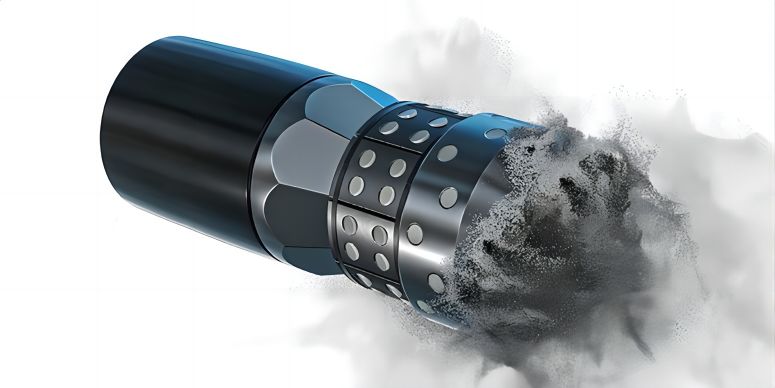
Conclusion
Disintegrating frac plugs have emerged as a transformative technology in hydraulic fracturing. By offering a streamlined and cost-effective approach to zone isolation during the fracturing process, they contribute significantly to enhanced well completion efficiency and production optimization. As the oil and gas industry strives for ever-increasing efficiency and environmental responsibility, disintegrating frac plugs are poised to play a vital role in the future of unconventional resource development.

